Dong Hao
DropEdge not Foolproof: Effective Augmentation Method for Signed Graph Neural Networks
Sep 29, 2024



Abstract:The paper discusses signed graphs, which model friendly or antagonistic relationships using edges marked with positive or negative signs, focusing on the task of link sign prediction. While Signed Graph Neural Networks (SGNNs) have advanced, they face challenges like graph sparsity and unbalanced triangles. The authors propose using data augmentation (DA) techniques to address these issues, although many existing methods are not suitable for signed graphs due to a lack of side information. They highlight that the random DropEdge method, a rare DA approach applicable to signed graphs, does not enhance link sign prediction performance. In response, they introduce the Signed Graph Augmentation (SGA) framework, which includes a structure augmentation module to identify candidate edges and a strategy for selecting beneficial candidates, ultimately improving SGNN training. Experimental results show that SGA significantly boosts the performance of SGNN models, with a notable 32.3% improvement in F1-micro for SGCN on the Slashdot dataset.
SGA: A Graph Augmentation Method for Signed Graph Neural Networks
Oct 15, 2023



Abstract:Signed Graph Neural Networks (SGNNs) are vital for analyzing complex patterns in real-world signed graphs containing positive and negative links. However, three key challenges hinder current SGNN-based signed graph representation learning: sparsity in signed graphs leaves latent structures undiscovered, unbalanced triangles pose representation difficulties for SGNN models, and real-world signed graph datasets often lack supplementary information like node labels and features. These constraints limit the potential of SGNN-based representation learning. We address these issues with data augmentation techniques. Despite many graph data augmentation methods existing for unsigned graphs, none are tailored for signed graphs. Our paper introduces the novel Signed Graph Augmentation framework (SGA), comprising three main components. First, we employ the SGNN model to encode the signed graph, extracting latent structural information for candidate augmentation structures. Second, we evaluate these candidate samples (edges) and select the most beneficial ones for modifying the original training set. Third, we propose a novel augmentation perspective that assigns varying training difficulty to training samples, enabling the design of a new training strategy. Extensive experiments on six real-world datasets (Bitcoin-alpha, Bitcoin-otc, Epinions, Slashdot, Wiki-elec, and Wiki-RfA) demonstrate that SGA significantly improves performance across multiple benchmarks. Our method outperforms baselines by up to 22.2% in AUC for SGCN on Wiki-RfA, 33.3% in F1-binary, 48.8% in F1-micro, and 36.3% in F1-macro for GAT on Bitcoin-alpha in link sign prediction.
Multi-Unit Diffusion Auctions with Intermediaries
Mar 15, 2022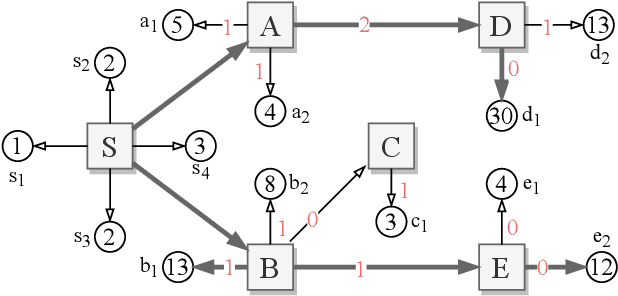
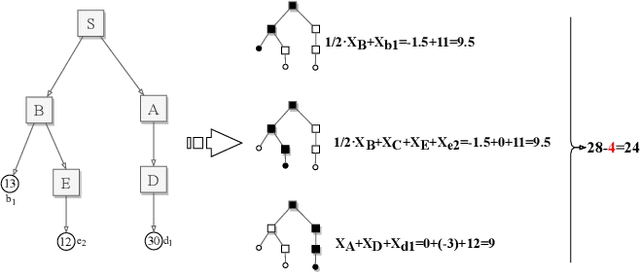
Abstract:This paper studies multi-unit auctions powered by intermediaries, where each intermediary owns a private set of unit-demand buyers and all intermediaries are networked with each other. Our goal is to incentivize the intermediaries to diffuse the auction information to individuals they can reach, including their private buyers and neighboring intermediaries, so that more potential buyers are able to participate in the auction. To this end, we build a diffusion-based auction framework which incorporates the strategic interaction of intermediaries. It is showed that the classic Vickrey-Clarke-Groves (VCG) mechanism within the framework can achieve the maximum social welfare, but it may decrease the seller's revenue or even lead to a deficit. To overcome the revenue issue, we propose a novel auction, called critical neighborhood auction, which not only maximizes the social welfare, but also improves the seller's revenue comparing to the VCG mechanism with/without intermediaries.
Invitation in Crowdsourcing Contests
Dec 06, 2021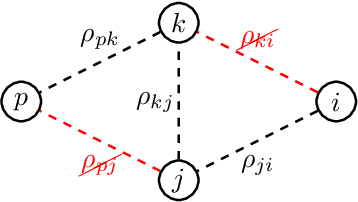


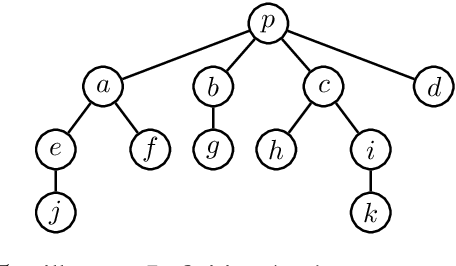
Abstract:In a crowdsourcing contest, a requester holding a task posts it to a crowd. People in the crowd then compete with each other to win the rewards. Although in real life, a crowd is usually networked and people influence each other via social ties, existing crowdsourcing contest theories do not aim to answer how interpersonal relationships influence peoples' incentives and behaviors, and thereby affect the crowdsourcing performance. In this work, we novelly take peoples' social ties as a key factor in the modeling and designing of agents' incentives for crowdsourcing contests. We then establish a new contest mechanism by which the requester can impel agents to invite their neighbours to contribute to the task. The mechanism has a simple rule and is very easy for agents to play. According to our equilibrium analysis, in the Bayesian Nash equilibrium agents' behaviors show a vast diversity, capturing that besides the intrinsic ability, the social ties among agents also play a central role for decision-making. After that, we design an effective algorithm to automatically compute the Bayesian Nash equilibrium of the invitation crowdsourcing contest and further adapt it to large graphs. Both theoretical and empirical results show that, the invitation crowdsourcing contest can substantially enlarge the number of contributors, whereby the requester can obtain significantly better solutions without a large advertisement expenditure.
Emerging Methods of Auction Design in Social Networks
Aug 01, 2021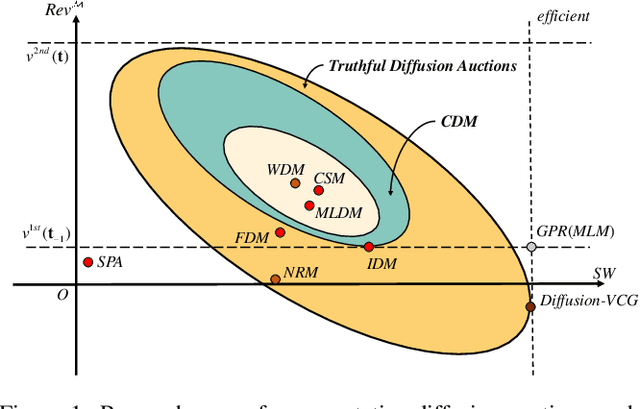

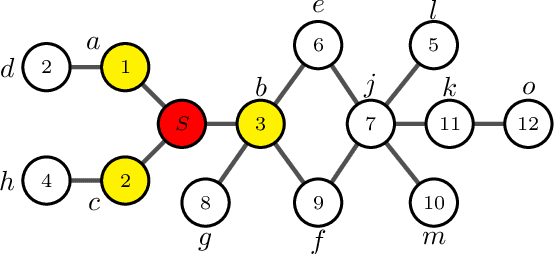
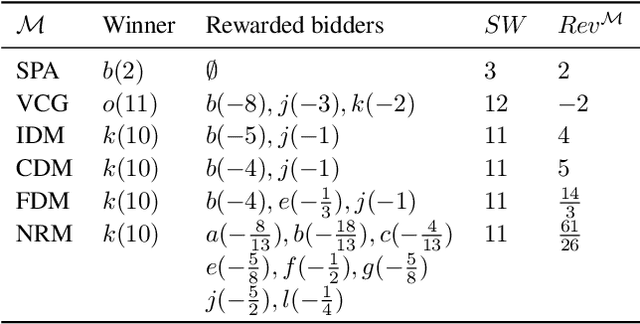
Abstract:In recent years, a new branch of auction models called diffusion auction has extended the traditional auction into social network scenarios. The diffusion auction models the auction as a networked market whose nodes are potential customers and whose edges are the relations between these customers. The diffusion auction mechanism can incentivize buyers to not only submit a truthful bid, but also further invite their surrounding neighbors to participate into the auction. It can convene more participants than traditional auction mechanisms, which leads to better optimizations of different key aspects, such as social welfare, seller's revenue, amount of redistributed money and so on. The diffusion auctions have recently attracted a discrete interest in the algorithmic game theory and market design communities. This survey summarizes the current progress of diffusion auctions.
Diffusion and Auction on Graphs
May 24, 2019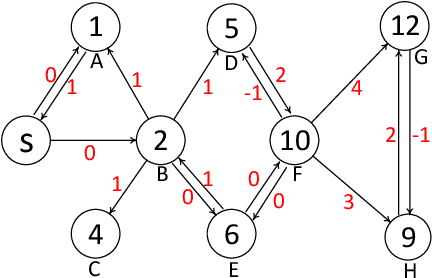
Abstract:Auction is the common paradigm for resource allocation which is a fundamental problem in human society. Existing research indicates that the two primary objectives, the seller's revenue and the allocation efficiency, are generally conflicting in auction design. For the first time, we expand the domain of the classic auction to a social graph and formally identify a new class of auction mechanisms on graphs. All mechanisms in this class are incentive-compatible and also promote all buyers to diffuse the auction information to others, whereby both the seller's revenue and the allocation efficiency are significantly improved comparing with the Vickrey auction. It is found that the recently proposed information diffusion mechanism is an extreme case with the lowest revenue in this new class. Our work could potentially inspire a new perspective for the efficient and optimal auction design and could be applied into the prevalent online social and economic networks.
Selling Multiple Items via Social Networks
Mar 07, 2019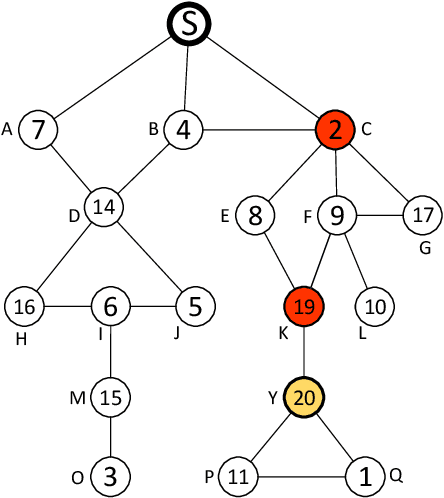
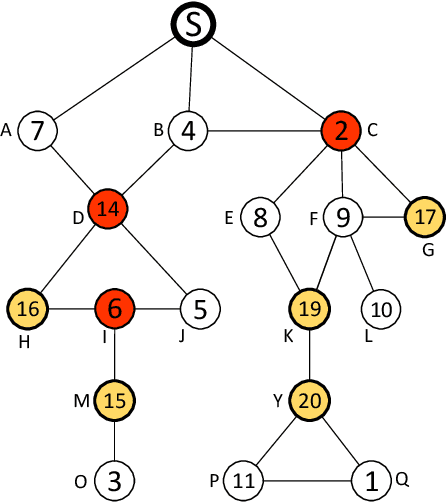
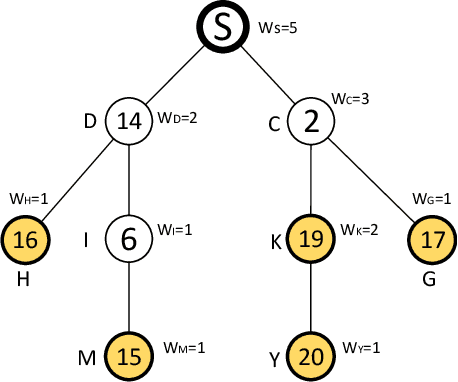
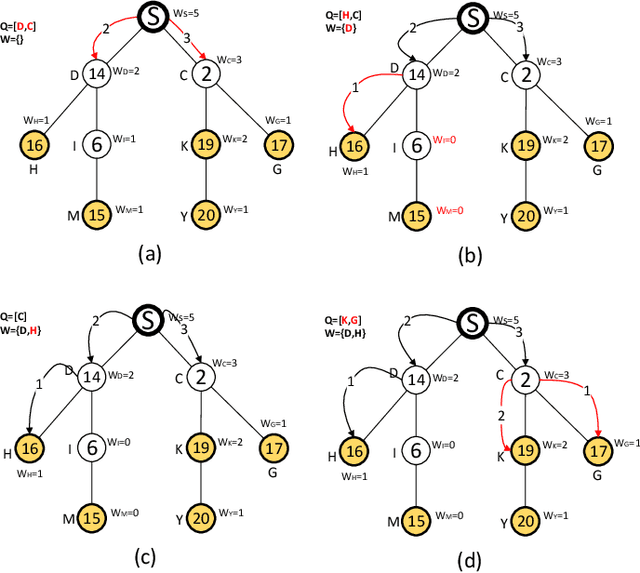
Abstract:We consider a market where a seller sells multiple units of a commodity in a social network. Each node/buyer in the social network can only directly communicate with her neighbours, i.e. the seller can only sell the commodity to her neighbours if she could not find a way to inform other buyers. In this paper, we design a novel promotion mechanism that incentivizes all buyers, who are aware of the sale, to invite all their neighbours to join the sale, even though there is no guarantee that their efforts will be paid. While traditional sale promotions such as sponsored search auctions cannot guarantee a positive return for the advertiser (the seller), our mechanism guarantees that the seller's revenue is better than not using the advertising. More importantly, the seller does not need to pay if the advertising is not beneficial to her.
Customer Sharing in Economic Networks with Costs
Jul 18, 2018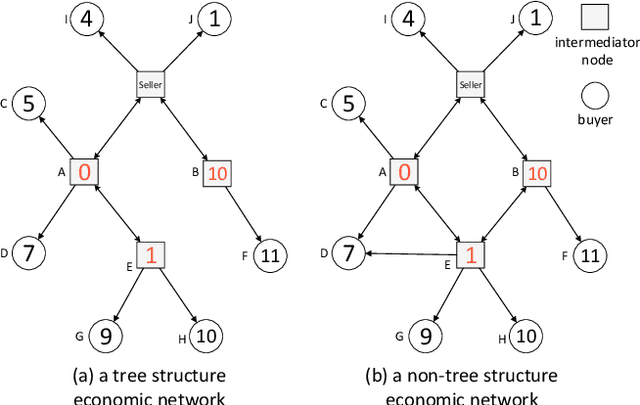
Abstract:In an economic market, sellers, infomediaries and customers constitute an economic network. Each seller has her own customer group and the seller's private customers are unobservable to other sellers. Therefore, a seller can only sell commodities among her own customers unless other sellers or infomediaries share her sale information to their customer groups. However, a seller is not incentivized to share others' sale information by default, which leads to inefficient resource allocation and limited revenue for the sale. To tackle this problem, we develop a novel mechanism called customer sharing mechanism (CSM) which incentivizes all sellers to share each other's sale information to their private customer groups. Furthermore, CSM also incentivizes all customers to truthfully participate in the sale. In the end, CSM not only allocates the commodities efficiently but also optimizes the seller's revenue.
Payoff Control in the Iterated Prisoner's Dilemma
Jul 17, 2018
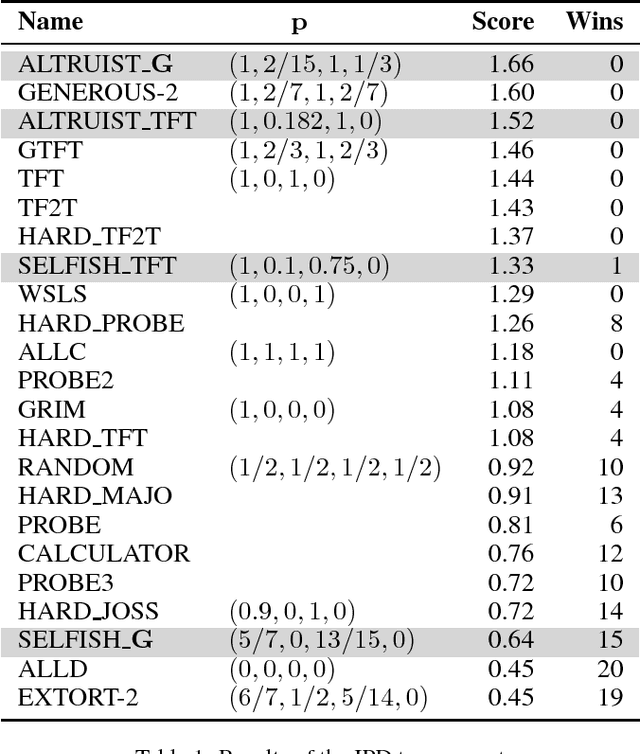


Abstract:Repeated game has long been the touchstone model for agents' long-run relationships. Previous results suggest that it is particularly difficult for a repeated game player to exert an autocratic control on the payoffs since they are jointly determined by all participants. This work discovers that the scale of a player's capability to unilaterally influence the payoffs may have been much underestimated. Under the conventional iterated prisoner's dilemma, we develop a general framework for controlling the feasible region where the players' payoff pairs lie. A control strategy player is able to confine the payoff pairs in her objective region, as long as this region has feasible linear boundaries. With this framework, many well-known existing strategies can be categorized and various new strategies with nice properties can be further identified. We show that the control strategies perform well either in a tournament or against a human-like opponent.
A generalized method toward drug-target interaction prediction via low-rank matrix projection
May 03, 2018
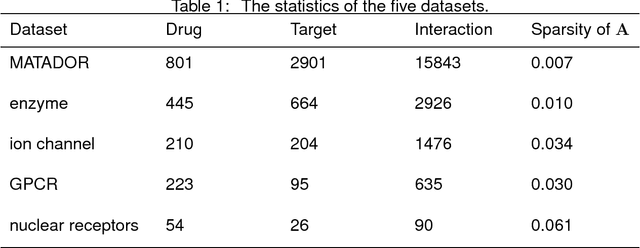
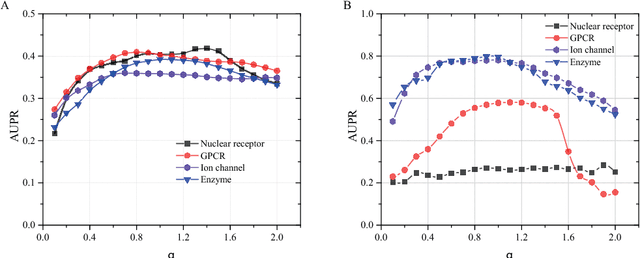
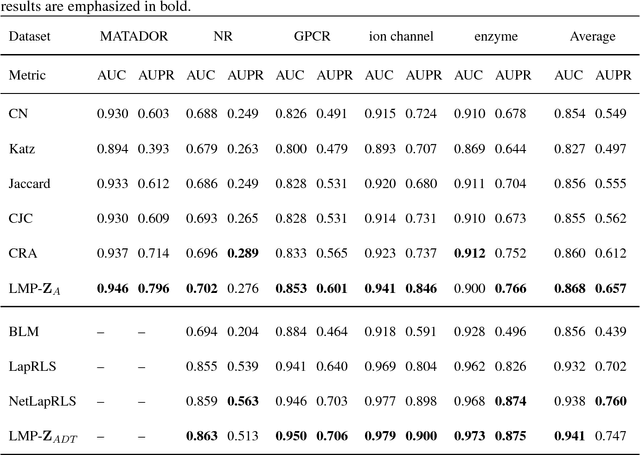
Abstract:Drug-target interaction (DTI) prediction plays a very important role in drug development and drug discovery. Biochemical experiments or \textit{in vitro} methods are very expensive, laborious and time-consuming. Therefore, \textit{in silico} approaches including docking simulation and machine learning have been proposed to solve this problem. In particular, machine learning approaches have attracted increasing attentions recently. However, in addition to the known drug-target interactions, most of the machine learning methods require extra characteristic information such as chemical structures, genome sequences, binding types and so on. Whenever such information is not available, they may perform poor. Very recently, the similarity-based link prediction methods were extended to bipartite networks, which can be applied to solve the DTI prediction problem by using topological information only. In this work, we propose a method based on low-rank matrix projection to solve the DTI prediction problem. On one hand, when there is no extra characteristic information of drugs or targets, the proposed method utilizes only the known interactions. On the other hand, the proposed method can also utilize the extra characteristic information when it is available and the performances will be remarkably improved. Moreover, the proposed method can predict the interactions associated with new drugs or targets of which we know nothing about their associated interactions, but only some characteristic information. We compare the proposed method with ten baseline methods, e.g., six similarity-based methods that utilize only the known interactions and four methods that utilize the extra characteristic information. The datasets and codes implementing the simulations are available at https://github.com/rathapech/DTI_LMP.
 Add to Chrome
Add to Chrome Add to Firefox
Add to Firefox Add to Edge
Add to Edge